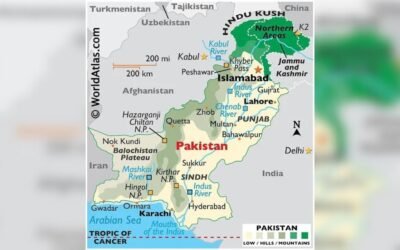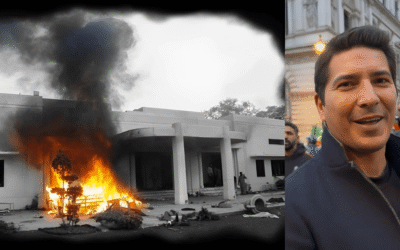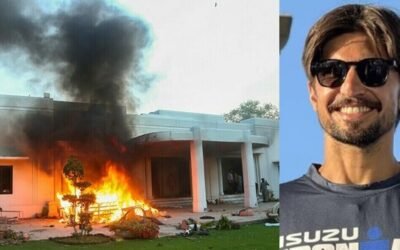“In every calamity — from the 2005 earthquake to the 2010 super floods — the Army has been Pakistan’s first responder.”
When monsoon clouds gather over Pakistan, they bring not only much-needed rain but also fear. In August 2025, that fear turned into devastation as torrential downpours triggered flash floods and landslides across Khyber Pakhtunkhwa (K-P). Villages in Swat, Chitral, Dir, and Kohistan were submerged, bridges collapsed, and entire communities found themselves cut off from the rest of the country.
🚨BREAKING: Field Marshal Asim Munir issues special instructions regarding rehabilitation of flood victims. pic.twitter.com/7kKDJv7iFq
— The Daily CPEC (@TheDailyCPEC) August 16, 2025
As cries for help echoed across the valleys, it was once again the Pakistan Army that stepped forward with speed, discipline, and resources to fill the vacuum of disaster response. Chief of Army Staff (COAS) Field Marshal Syed Asim Munir issued special instructions and announced a series of immediate relief measures. These steps not only addressed the humanitarian crisis but also highlighted the indispensable role of the armed forces whenever Pakistan faces a calamity.
“From sepoy to general, every soldier donated a day’s salary to help flood victims.”
You May Like To Read: Strengthening Public Trust in Democratic Institutions
Salary Sacrifice: Solidarity in Action
One of the most striking announcements was the decision that all Army personnel—from sepoy to general—would donate one day’s salary for the rehabilitation of flood victims. In a time when inflation bites and salaries are stretched, this gesture matters. It is not just about money; it is about solidarity. When tens of thousands of soldiers contribute directly from their personal incomes, it sends a message of shared sacrifice.
Alongside this financial aid, the Army allocated over 600 tonnes of military rations for distribution among flood-affected families. These rations, stocked in advance and transported with military efficiency, ensured that no stranded family went without food or clean drinking water. In emergencies, survival is measured in hours, not days. This swift delivery of essentials made the difference between despair and hope.
“Over 600 tonnes of Army rations have been allocated to sustain stranded families.”
Boots on the Ground: Troop Deployment
The COAS also ordered the deployment of additional troops to intensify relief operations in the worst-hit districts. Units already stationed in K-P were directed to prioritize rescue, rehabilitation, and coordination with civil authorities. From manning evacuation boats to setting up temporary medical camps, the presence of soldiers on the ground gave the relief effort scale and credibility.
The Army’s logistical advantage lies in its mobility and organization. Trucks, bulldozers, boats, and field hospitals can be mobilized overnight—something civilian agencies often struggle to achieve. For displaced families, the sight of soldiers arriving in flooded villages is more than symbolic; it is reassurance that the state has not abandoned them.
“Additional troops have been dispatched across K-P to intensify relief operations.”
Engineering Hope: Repairing Lifelines
Perhaps the gravest challenge in K-P during floods is the destruction of bridges and roads. Washed-away crossings leave valleys completely cut off, making relief delivery nearly impossible. Recognizing this, Field Marshal Munir issued special instructions to the Corps of Engineers to accelerate bridge repairs and, where required, build temporary crossings.
Field Marshal Syed Asim Munir has issued special instructions for rehabilitation efforts in flood-hit areas.
For more read https://t.co/h8tX79wMOU#AzaadEnglish #AzaadDigital pic.twitter.com/0WOQ3QjQ8u
— Azaad English (@azaad_english) August 16, 2025
This may sound technical, but for families in an isolated village, a temporary bridge is the difference between hunger and relief. Without connectivity, trucks carrying rations cannot move, ambulances cannot reach the injured, and children cannot be evacuated to safer grounds. By prioritizing infrastructure repair, the Army targeted the root problem of isolation.
“Army engineers are repairing broken bridges and building temporary crossings to restore connectivity.”
Search and Rescue: Specialized Expertise
Among the COAS’s directives was the deployment of an Urban Search and Rescue (USAR) team, accompanied by a K-9 sniffer dog unit. These highly trained teams specialize in locating survivors in collapsed houses, submerged buildings, and unstable debris. Pakistan’s civilian structure simply does not have such technical capacity at scale.
This matters because floods do not just destroy infrastructure—they trap people. Families are often buried under landslides or marooned in upper floors of homes surrounded by water. A dog trained to detect human scent in rubble can save precious hours, and sometimes entire lives.
“Urban Search & Rescue teams, supported by K-9 sniffer dogs, are locating survivors in submerged villages.”
Aviation Support: Lifelines in the Sky
Complementing ground operations, Army helicopters and aviation units were mobilized to conduct aerial evacuation and relief drops. Helicopters airlifted injured people to hospitals in safer towns and delivered food packets to communities cut off by floodwaters.
In mountainous K-P, where roads can remain blocked for weeks, aviation support is irreplaceable. A single sortie can carry both medical supplies and hope to places where no truck can go.
“Army helicopters are airlifting the injured and delivering rations to cut-off valleys.”
The Broader Picture: Army’s Role in National Calamities
While the Army’s role in K-P’s flood crisis is praiseworthy, it is not an isolated case. Pakistan’s history of disasters tells the same story:
- In the 2005 earthquake, the Army led search and rescue operations, setting up field hospitals within hours.
- During the 2010 super floods, Army engineers built dozens of makeshift bridges and provided boats for mass evacuations.
- In every major landslide, drought, or locust attack, it has been Army aviation, logistics, and manpower that tipped the balance between paralysis and action.
This consistency is why ordinary Pakistanis instinctively look towards the military in times of disaster. It is not just about uniforms—it is about competence.
Flood Devastation in KP!
Field Marshal Syed Asim Munir orders additional troops for rescue & relief.
Pakistan Army contributes 1-day salary, 600+ tons of ration, deploys engineers, Urban Search & Rescue, sniffing dog units & helicopters.#SamaaTV #KPFloods #ReliefOperations pic.twitter.com/tBSZiyPwq7
— SAMAA TV (@SAMAATV) August 16, 2025
You May Like To Read: Beyond the Ballot: Can Citizens Shape Policy in the Digital Age?
The Double Reality
Yet, while celebrating the Army’s response, we must confront a difficult truth: why does disaster management in Pakistan continue to rely so heavily on the military? Civilian institutions like the National Disaster Management Authority (NDMA) are mandated to lead such operations, yet their budgets, training, and infrastructure remain weak.
The Army’s intervention should not become a substitute for civilian preparedness. Rather, it should be seen as a bridge—filling immediate gaps while the civilian structure is strengthened. With climate change increasing the frequency and intensity of floods, Pakistan cannot afford to treat disaster management as an ad-hoc exercise.
Unity in Crisis
For now, though, what matters is relief for those suffering in K-P. The Army’s measures—salary donations, ration allocations, troop deployments, bridge repairs, USAR teams, and aviation sorties—have brought tangible relief to thousands. More importantly, they have restored a sense of national solidarity.
In times when politics divides and institutions falter, these actions remind us that Pakistan is still capable of acting as one nation. The Army, once again, has not just fought an enemy in uniform but has fought for the survival of its own people against nature’s wrath.
Conclusion
The floods of August 2025 are another chapter in Pakistan’s painful encounter with climate vulnerability. But they are also another chapter in the Army’s role as the country’s first responder. Under Field Marshal Syed Asim Munir’s directives, Pakistan’s soldiers have shown that service to the nation goes beyond the battlefield.
From helicopters in the sky to engineers building bridges, from K-9 units sniffing for survivors to sepoys donating salaries, the Army’s presence has been both practical and symbolic. It has saved lives, restored hope, and reinforced the bond between the armed forces and the people they serve.
The lesson for Pakistan is clear: disasters will come, but if solidarity, discipline, and preparedness are matched with strong institutions, resilience will always triumph over despair.







